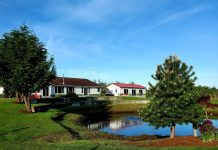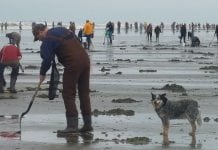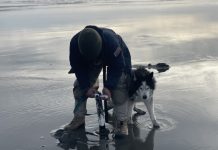Submitted by Grays Harbor County Emergency Management
Four years have elapsed since the Japanese earthquake and tsunami, which raises the question: Have changes been made to any US planning or worldwide planning? One significant change in Washington State and Grays Harbor County is the Ocosta School District Elementary School Project where they are building the first vertical evacuation, tsunami engineered, safe haven building in North America, but have there been any other changes?
Reply from Grays Harbor Emergency Management’s Earthquake, Tsunami Volcano Programs Manager, John Schelling:
The short answer is yes, there has been a lot that has changed. Here are a few:
Lesson from Japan:
Plan for the right hazard. Japan planned for a smaller M8.2 event, and then had a 9.0.
In Washington:
Fortunately, our paleo tsunami and ghost forest history has shown that we have had to worry about a 9.0 as well as smaller events. However, science is not a static process, and new research should give way to updated hazard assessment. We have been re-examining the tsunami hazard from Cascadia and updating the coastal hazard assessments using an earthquake that generates a greater amount of slip, which makes a bigger tsunami.
Lesson from Japan:
Vertical evacuation can save thousands of lives, if they are high enough
In Washington:
We conducted site-specific hazard assessments for current sites proposed for vertical evacuation using a larger scenario and added additional factors of safety to account for uncertainty.
Lesson from Japan:
Don’t rely on your technical warning systems to alert people as there may be issues in getting an accurate warning out before the telecommunications infrastructure is impaired.
In Washington and the US:
We continue to educate coastal populations on natural warning signs of a tsunami and recommendation evacuation when people feel the ground shake. The technological system is there as a secondary source of information, if it’s available.
Lesson from Japan:
Global Positioning Systems, (GPS) can help identify BIG earthquakes more quickly than traditional seismometers.
In Washington and the US:
There are discussions moving forward about how to integrate GPS data into the traditional seismometer-based warning network. Additionally, Washington State is home to one of the larger GPS networks, the Pacific Northwest Geodetic Array (PANGA), which is run out of Central Washington University. For more information on PANGA go to: http://www.panga.cwu.edu/about/news/
Lesson from Japan event here in Washington:
Limited English Proficiency communities may be unaware of tsunami hazard zones, tsunami warning sirens, and tsunami evacuation maps and routes given evacuations in Grays Harbor County to a local hospital
In Washington:
The State Tsunami Program, in conjunction with state and local partners, including Grays Harbor County, has begun to develop a series of products and outreach materials, such as Public Service Announcements, (PSAs), in Spanish to more effectively educate local coastal populations.
For more information, visit Grays Harbor Emergency Management online.












































